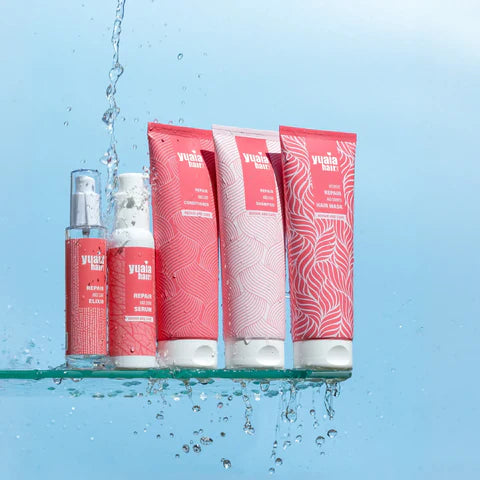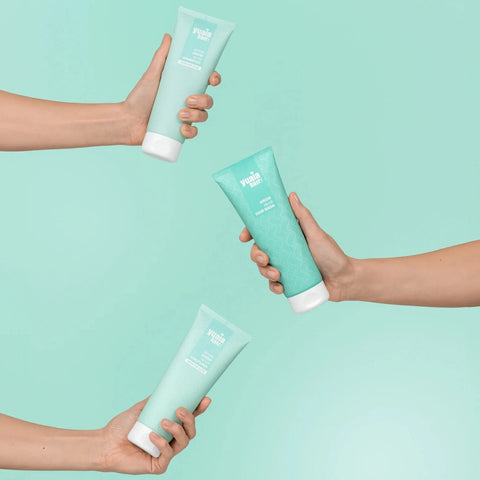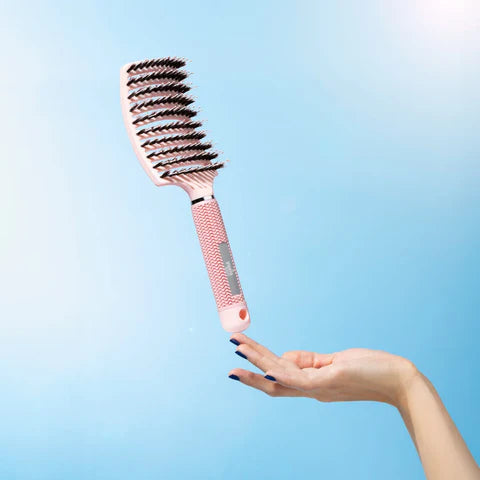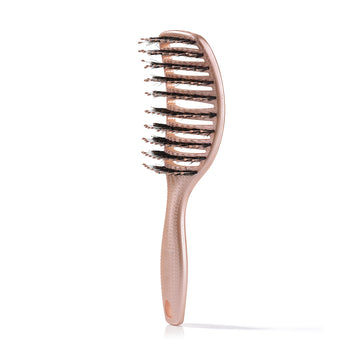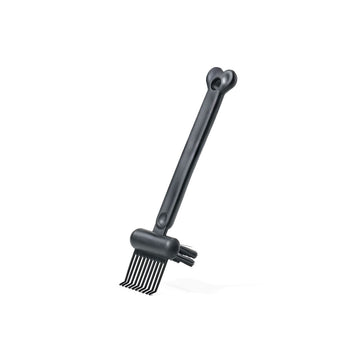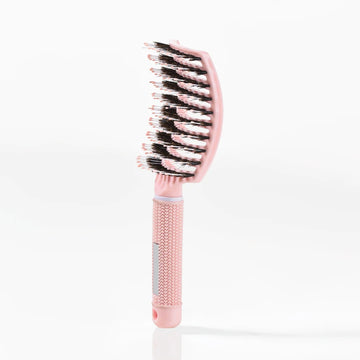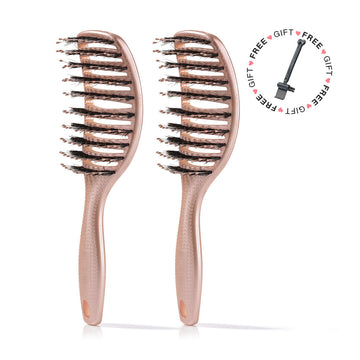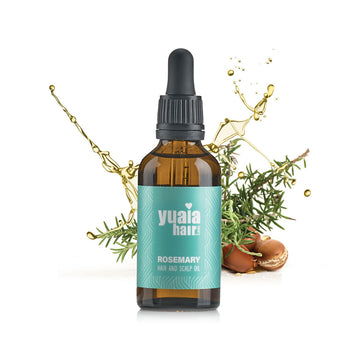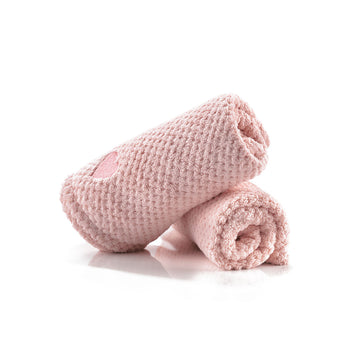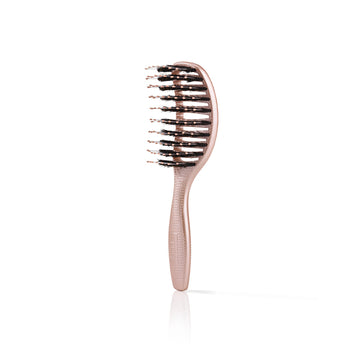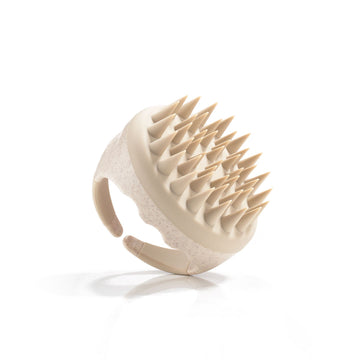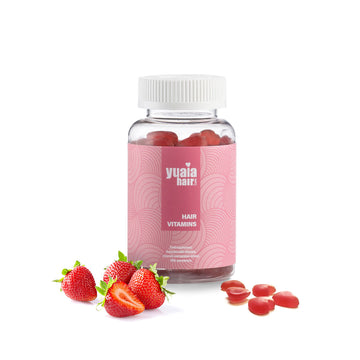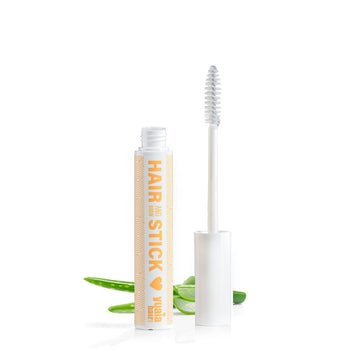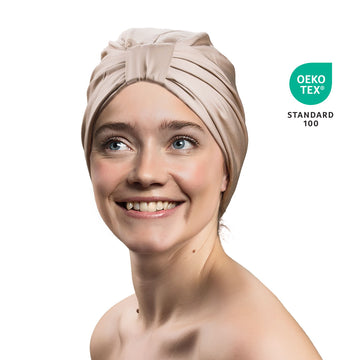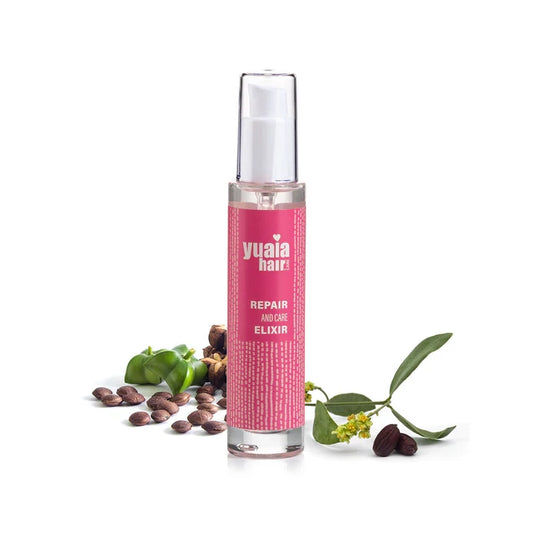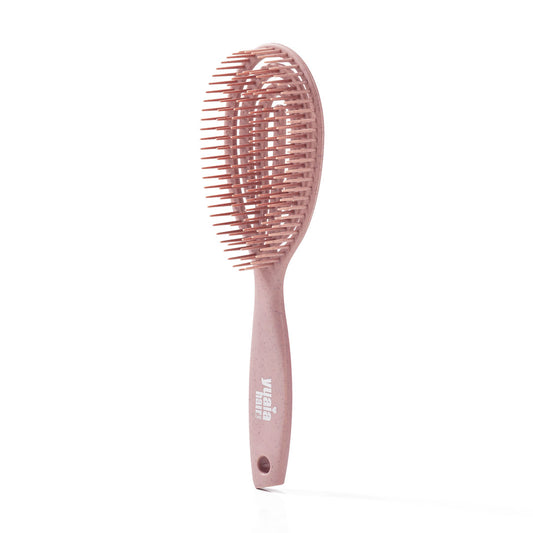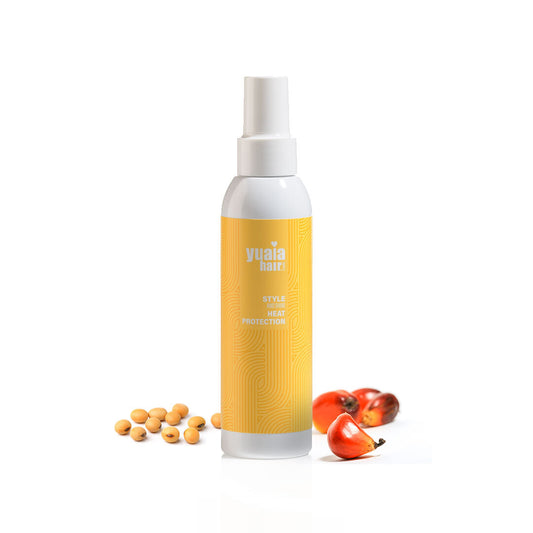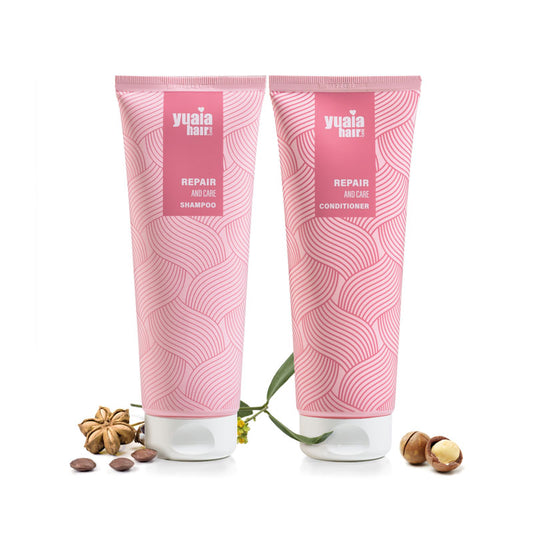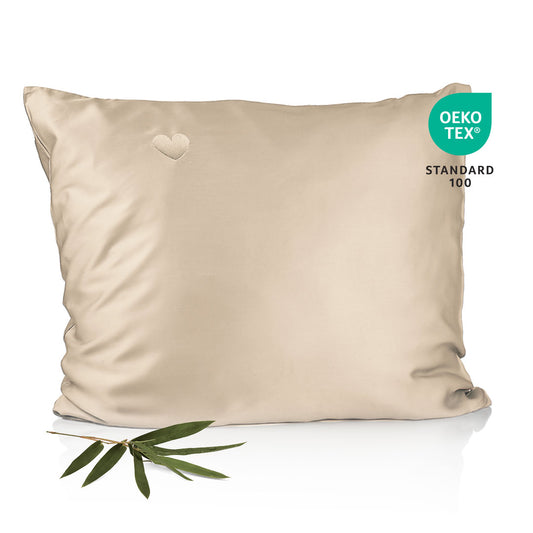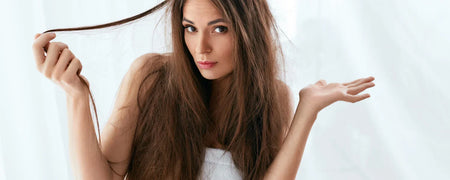
What are the signs of unhealthy hair?
Understanding the signs of unhealthy and damaged hair is crucial to addressing the problem early. Damaged hair often presents several clear indicators, many of which can be observed with a simple touch or glance. Knowing these signs can help you take preventive action before the condition deteriorates further.
Dryness and brittleness
Dryness and brittleness in hair are clear indicators of moisture deficiency and depleted natural oils. When hair lacks adequate hydration, it often takes on a coarse, straw-like texture that feels rough to the touch.
This condition can cause individual strands to rub harshly against each other, increasing friction and resulting in breakage, split ends, and an overall dull appearance. Common causes include heat damage, chemical treatments, sun exposure, and the use of harsh shampoos or styling products.
Over time, untreated dryness compromises hair elasticity and resilience, making it more vulnerable to further damage and requiring targeted care to restore balance.
Lack of shine
Lack of shine is a clear indication that your hair is not in optimal condition. It usually occurs when the outer layer—the cuticle—is damaged and can no longer reflect light evenly. This leads to a dull, lifeless appearance often linked to dryness, wear, or structural weakness in the hair fibers.
When the cuticle is smooth and intact, hair appears shiny and healthy, but when the surface is lifted or worn, it loses its ability to capture and reflect light. As such, shine is closely connected to overall hair health and often signals the need for targeted care.
Split ends
Split ends are one of the most noticeable indicators of hair damage and typically form when the cuticle, the hair’s protective outer layer, becomes weakened or stripped away. Without this barrier, the inner cortex is exposed and vulnerable, leading the hair shaft to fray or split into two or more strands.
This damage usually begins at the tips but can travel upward if not addressed, resulting in a dull, uneven appearance and increased breakage. Frequent heat styling, chemical treatments, rough brushing, and environmental stressors can all contribute to split ends. Regular trims and proper care are essential to prevent and manage them.
Frizz and tangling
Frizz and tangling are common signs of compromised hair health, often resulting from a lifted, uneven, or damaged cuticle layer. When the cuticle is no longer smooth and flat, individual strands are more likely to catch on one another, leading to knots, snarls, and an overall unruly appearance. Frizz typically intensifies in humid environments, as porous hair absorbs excess moisture and swells unevenly. Tangled hair becomes harder to detangle and style, increasing the risk of breakage during brushing or manipulation. This cycle of damage can worsen over time unless addressed through proper hydration, conditioning, and gentle handling practices tailored to hair needs.
Excessive shedding or breakage
Excessive hair loss or breakage is a clear sign that your hair is weakened and in need of extra care. While some shedding is normal, a noticeable increase in daily hair fall or the appearance of short, uneven broken strands—especially those without a root bulb—may indicate damaged hair fibers.
This can result from internal factors such as stress or poor nutrition, as well as external stressors like heat styling, chemical treatments, or lack of moisture. Targeted care is essential to help restore strength, improve resilience, and protect the hair from further damage.
Loss of elasticity
Loss of elasticity is a key indicator that the hair’s internal structure has been compromised. Healthy hair naturally stretches and springs back to its original shape without breaking. This flexibility—often referred to as hair’s "bounce"—is essential for withstanding everyday styling and handling. When hair loses this resilience, it becomes fragile and more prone to breakage under tension, even during gentle manipulation. Such a change signals internal fiber damage and typically requires intensive care to help restore the hair’s strength, flexibility, and ability to endure physical stress without snapping.
Healthy hair vs unhealthy hair
To better understand the state of your hair, it's helpful to compare healthy and unhealthy characteristics across several key aspects. This qualitative approach gives a clearer, more relatable picture of what well-maintained hair should look and feel like—and where problems may be developing.
Texture is one of the first noticeable differences. Healthy hair feels smooth, soft, and pleasant to the touch. It glides through your fingers without catching. In contrast, unhealthy hair feels coarse, rough, and uneven, often snagging and resisting movement.
Shine is another strong indicator. When the cuticle of the hair lies flat and reflects light, hair appears naturally shiny and vibrant. Damaged hair, however, has a disrupted cuticle that scatters light unevenly, leaving the hair looking dull, matte, and lifeless.
Strength and elasticity work hand in hand. Healthy hair is flexible and can stretch slightly without breaking, especially when wet. Weak or unhealthy strands will snap easily under tension, showing a lack of internal integrity and resilience.
Manageability is also a major factor. If your hair is easy to detangle, style, and control throughout the day, it's likely in good shape. Conversely, hair that tangles frequently, knots easily, and feels uncooperative during styling may be experiencing structural issues.
Moisture retention refers to how well your hair holds hydration after washing. Healthy hair remains supple and hydrated for a reasonable period. Damaged hair, by contrast, dries out quickly and may require frequent reapplication of products to feel manageable.
Color vibrancy reflects how well your hair holds dye or its natural pigment. Even untreated hair can show signs of poor color retention when it's unhealthy. Faded, uneven tone and rapid color loss are common issues in damaged hair.
Scalp condition is often overlooked but crucial. A healthy scalp supports the growth of strong hair and remains balanced—neither excessively dry nor oily. Unhealthy hair is often accompanied by flakiness, irritation, or buildup.
Growth consistency helps measure long-term health. Hair that grows at a steady, predictable rate and maintains length with minimal breakage is typically healthy. Slower or patchy growth often suggests internal or external issues.
Resilience to styling rounds out the comparison. Healthy hair can handle occasional heat styling or manipulation with minimal impact. Damaged hair reacts poorly to such exposure, becoming brittle or more fragile with each session.
By considering these qualitative markers in your daily routine, you can better determine the condition of your hair and pinpoint areas that require targeted care or lifestyle changes.
How to know if your hair is damaged
In addition to visual cues, there are several easy and insightful assessments you can perform at home to better evaluate the condition of your hair. These self-tests require minimal tools and offer reliable insights when performed regularly.
-
Stretch test: Take a single strand of hair, either dry or slightly damp, and gently pull it from both ends. Healthy hair should stretch slightly before returning to its original shape. If the strand breaks quickly without any elasticity, it's a clear sign of structural weakness. Performing this test once a week can help you monitor changes over time.
-
Porosity test: This simple test involves placing a clean, dry strand of hair in a glass of water. If the strand floats for a while before sinking slowly, your hair has normal porosity and likely retains moisture well. If it sinks quickly, the hair cuticle may be overly porous and unable to hold hydration, which often correlates with damage. High porosity hair typically feels rough and dries out fast after washing.
-
Scalp health check: Examine your scalp under bright light. Look for redness, excessive flakes, clogged follicles, or areas that feel overly oily or uncomfortably tight. A healthy scalp should feel balanced and free of visible irritation. Poor scalp condition not only affects comfort but also impacts how well your hair grows and how resilient it becomes to damage.
-
Breakage patterns: Pay attention to the hair left behind in your brush, pillow, or shower. Breakage appears as short, snapped strands—usually uneven in length and often with frayed ends. Unlike normal hair fall, which includes full-length strands with a root bulb attached, breakage is a sign of weakened hair fibers that can't handle physical stress.
-
Tangle behavior: Note how easily your hair tangles throughout the day. Hair that constantly knots and mats, especially at the ends, may be a sign of lifted or damaged cuticles. These raised cuticles catch on each other more easily, making detangling a damaging process in itself.
These tests complement visual observation and provide a more complete picture of your hair's health. When used consistently, they allow you to track improvements or worsening conditions over time, helping you adjust your routine proactively and with confidence.
How to fix unhealthy hair
Once damage is identified, the focus shifts to repair. Restoring hair health requires a consistent approach, combining daily habits, product selection, styling techniques, and internal wellness. Each action reinforces the others to strengthen your hair from root to tip.
Limit heat and chemical exposure
Heat styling and chemical treatments are among the most common culprits of hair damage. Reduce the frequency of using flat irons, curling wands, and blow dryers. When heat is necessary, always apply a heat protectant to shield the strands. Avoid harsh chemical processes such as bleaching and frequent coloring whenever possible.
A targeted haircare routine
Select products based on your hair’s specific needs. Sulfate-free shampoos and nourishing conditioners are gentler on the scalp and strands. Weekly treatments such as deep conditioning masks, hot oil therapies, and protein-rich formulas can help restore strength and hydration. Rotate treatments based on seasonal changes and styling habits.
Get regular trims
Split ends can travel up the hair shaft and cause further weakening. Regular trims, every 6 to 8 weeks, keep the ends healthy and prevent fraying. Even a small trim can make a noticeable difference in the appearance and health of your hair.
Embrace protective styling
Wearing your hair in protective styles helps reduce exposure to environmental stressors and mechanical damage. Styles like braids, buns, and twists—especially when not too tight—can prevent breakage and preserve moisture. When sleeping, use bamboo pillowcases or hair wraps to further protect delicate strands.
Minimize mechanical stress
Minimizing mechanical stress is essential for maintaining healthy hair and preventing unnecessary breakage. When detangling, always use a wide-tooth comb or a brush specifically designed for delicate strands, particularly on wet hair, which is at its most vulnerable. Begin detangling from the ends and gently work your way up to avoid pulling or snapping the hair. Avoid aggressive brushing, especially when hair is damp, and steer clear of tight hairstyles such as ponytails or braids that put excessive tension on the scalp and hairline. Opt for loose hairstyles and protective techniques that reduce strain, supporting stronger and more resilient hair over time.
Consistency brings results
Consistency is key. With time, patience, and attentive care, even severely damaged hair can begin to regain its strength, shine, and manageability. Establishing and sticking to a routine tailored to your hair type is one of the most effective ways to foster long-term hair resilience and beauty.
Restoring hair health through awareness and action
Recognizing the signs of unhealthy hair is the foundation of effective hair care. From brittleness and breakage to frizz and shedding, these symptoms signal the need for targeted interventions. By understanding how to assess and address damage, you empower yourself to restore your hair's natural vitality and resilience. With patience and proper care, even the most distressed hair can become healthy and vibrant again.
Frequently Asked Questions
How can I tell if my hair is unhealthy?
Unhealthy hair often shows signs such as dryness, brittleness, split ends, excessive shedding, frizz, lack of shine, and difficulty in managing tangles. You may also notice your hair breaking easily or losing its natural elasticity and bounce.
What causes hair to become damaged or unhealthy?
Common causes include frequent heat styling, chemical treatments like coloring or perming, harsh shampoos, environmental stressors (such as sun exposure and pollution), poor nutrition, and rough handling or tight hairstyles that put stress on the hair shaft.
Can damaged hair be repaired, or do I need to cut it off?
While some damage, especially split ends, can only be removed by trimming, many signs of unhealthy hair can be improved with proper care. Using nourishing products, minimizing heat and chemical exposure, and adopting gentle styling habits can help restore strength and appearance over time.
How often should I trim my hair to keep it healthy?
It is generally recommended to trim your hair every 6 to 8 weeks. Regular trims help remove split ends and prevent further damage from traveling up the hair shaft, keeping your hair looking and feeling healthier.
What are some quick ways to improve the health of my hair?
Quick improvements include using a deep conditioning treatment, switching to a sulfate-free shampoo, reducing heat styling, protecting your hair from sun and environmental damage, and adopting protective hairstyles. Consistency with these habits will yield the best results over time.
 2-4 day UK delivery
2-4 day UK delivery
 25.000+ satisfied customers
25.000+ satisfied customers
 Satisfaction Guarantee
Satisfaction Guarantee



